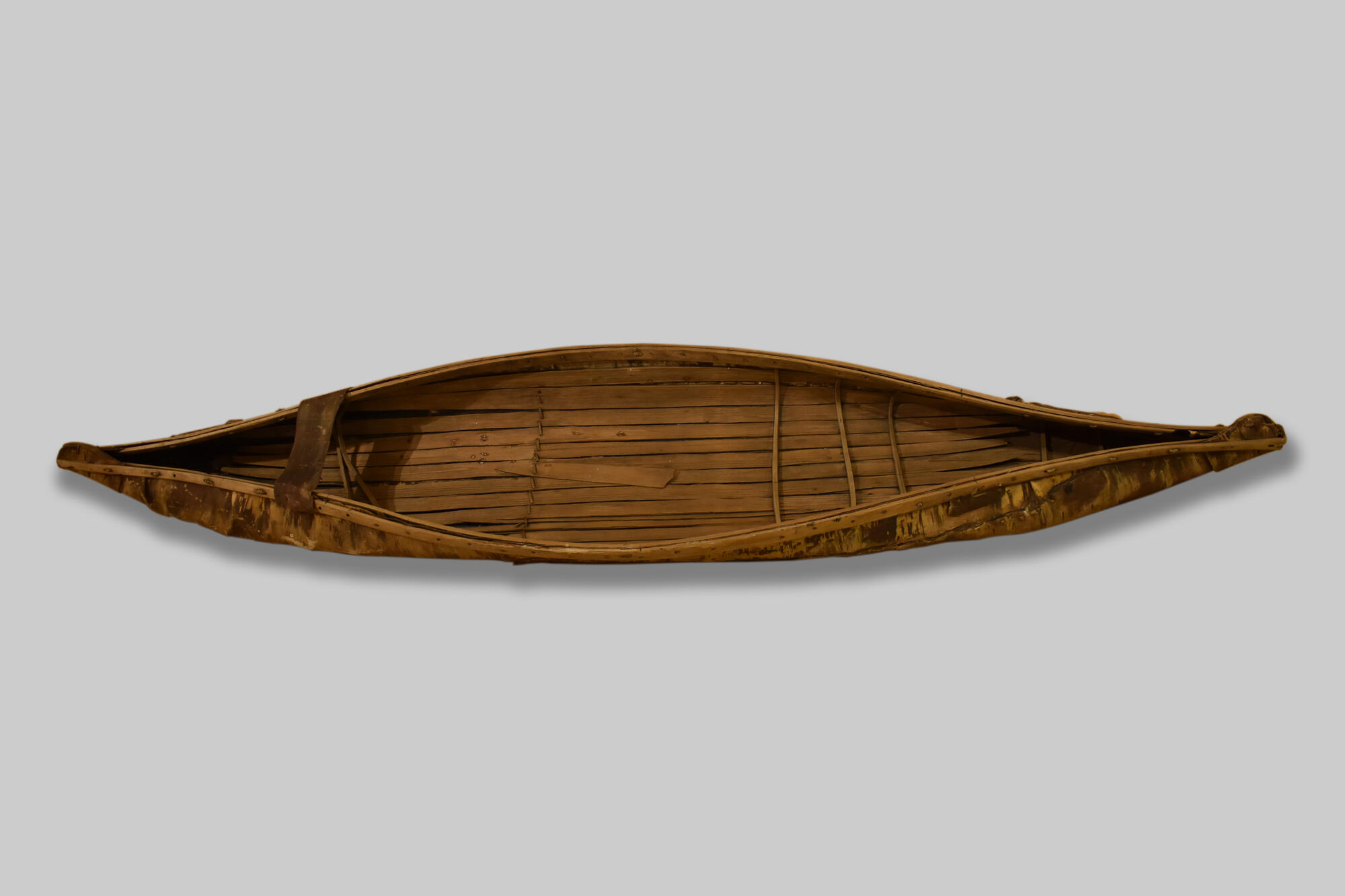A birch bark boat — a shuttle for one or two people, it was made from a light frame and specially processed and sewn birch bark. Birch bark — a unique natural material, and people have been using it since ancient times. Because of its properties — accessibility, plasticity, ease of processing, tightness-bark began to be used, including in shipbuilding. A small narrow boat without a keel, with a sharp nose and a blunt, stumped stern, people usually used for fast crossing, rafting on the river or fishing.
Boats making, as well as the work on other products made of wood, bone and metal, was almost entirely done by men. Birch bark boat was built using the simplest tools — an axe or a large knife. To do this, strong branches were cut and processed and the necessary indentations were cut out on them. It was not always possible to find a birch with bark suitable in all aspects for building a boat, so they cut off smaller pieces of birch so that they could then be sewn into a cloth of the required area.
Mostly women worked with the birch bark prepared in advance. They sewed from it not only boats and cloths for tents, but also many household items, dishes. Birch bark was sewn both in width and length, while trying to make as few seams as possible. The inner layers of bark were used to cover the boat from the outside, and the white layer of birch bark was used inside.
Birch bark was traditionally used by Tungusic people (Evenks). Usually, almost all the men of the community went fishing. The most common way of catching fish among Evenk fishermen was to beam on a spear — a tool in the form of a long strong stick with a pointed tip. In winter, it was pricked through holes in the ice, and in summer, it was radiated from a boat. A common method of fishing was the simplest and tackle traps: in small rivers the fishermen arranged latch and installed troughs and muzzles in it.
The specimen of the birch bark boat, presented in the museum exhibition, was brought 1893 by Ignatiy Komyagin, brother-in-law of Ignatiy Kytmanov and his colleague — gold miner.
Boats making, as well as the work on other products made of wood, bone and metal, was almost entirely done by men. Birch bark boat was built using the simplest tools — an axe or a large knife. To do this, strong branches were cut and processed and the necessary indentations were cut out on them. It was not always possible to find a birch with bark suitable in all aspects for building a boat, so they cut off smaller pieces of birch so that they could then be sewn into a cloth of the required area.
Mostly women worked with the birch bark prepared in advance. They sewed from it not only boats and cloths for tents, but also many household items, dishes. Birch bark was sewn both in width and length, while trying to make as few seams as possible. The inner layers of bark were used to cover the boat from the outside, and the white layer of birch bark was used inside.
Birch bark was traditionally used by Tungusic people (Evenks). Usually, almost all the men of the community went fishing. The most common way of catching fish among Evenk fishermen was to beam on a spear — a tool in the form of a long strong stick with a pointed tip. In winter, it was pricked through holes in the ice, and in summer, it was radiated from a boat. A common method of fishing was the simplest and tackle traps: in small rivers the fishermen arranged latch and installed troughs and muzzles in it.
The specimen of the birch bark boat, presented in the museum exhibition, was brought 1893 by Ignatiy Komyagin, brother-in-law of Ignatiy Kytmanov and his colleague — gold miner.



